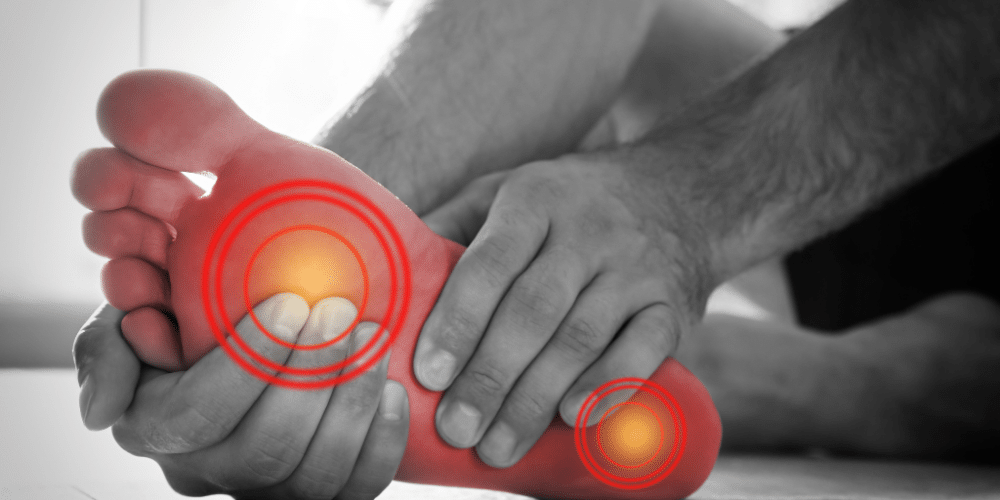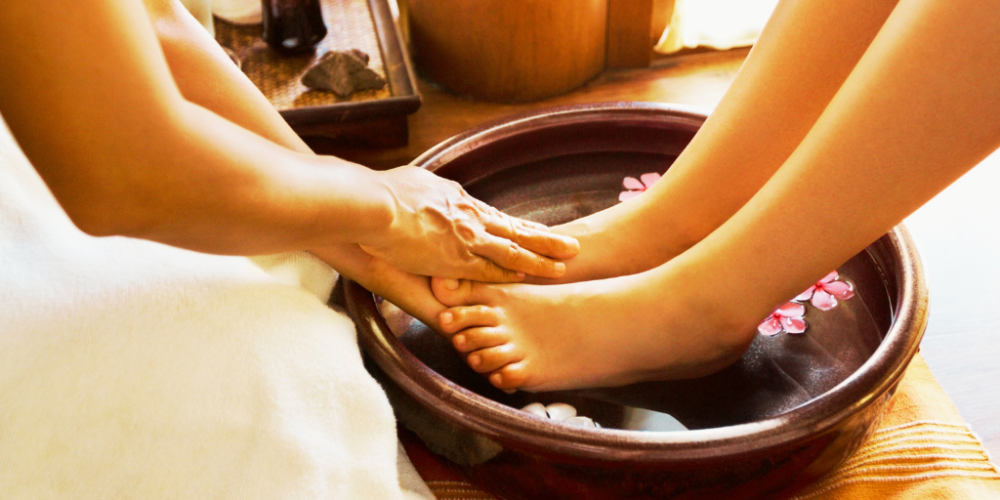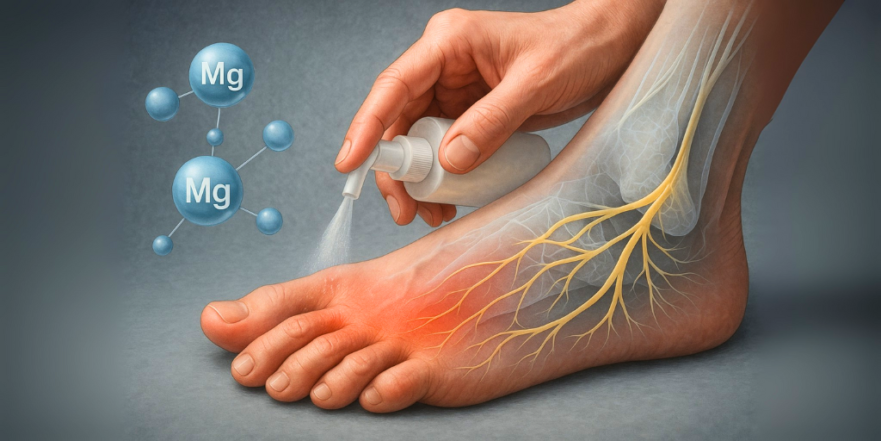
What if I told you that a simple mineral, one your body is likely craving, could unlock a new level of well-being when applied to the soles of your feet? It sounds almost too simple to be true, but a growing number of people are turning to topical magnesium oil as a secret weapon for everything from skin health to deep relaxation. You’ve probably heard about the importance of magnesium in your diet, but the idea of absorbing it through your skin—a practice known as transdermal application—is gaining serious traction. The feet, with their thin skin and high concentration of pores, are a prime target for this method.
In this article, we’re going to do a deep dive into the world of magnesium oil for your feet. We’ll separate the science from the hype and explore the real, tangible benefits you might experience. You’ll learn why this practice isn’t just a fleeting wellness trend but a tool rooted in the biochemical functions of this master mineral. We’ll cover how it can soothe irritated skin, ease nagging pains, and become a cornerstone of your relaxation routine. We’ll also tackle the big questions: Can it actually fix a magnesium deficiency? And how can you use it safely and effectively? Let’s get started.
Key Takeaways
- Localized Benefits are Key: Applying magnesium oil to your feet primarily offers local benefits to the skin and underlying tissues. Its ability to be absorbed into the bloodstream to correct a systemic deficiency is not well-established.
- Soothes Skin Conditions: Due to its anti-inflammatory properties, magnesium oil can be a helpful tool for calming certain inflammatory skin conditions like psoriasis, eczema, and allergic reactions when applied topically.
- Eases Pain and Discomfort: Topical magnesium may help reduce localized pain, particularly from conditions like peripheral neuropathy or general foot soreness, by helping to regulate nerve signals.
- Promotes Relaxation: Using magnesium oil or Epsom salts in a foot massage or soak is an excellent way to promote relaxation and relieve stress, largely through the physical act of massage and the mineral’s role in calming the nervous system.
- Not a Replacement for Medical Advice: While generally safe, magnesium oil is not a cure for underlying diseases. Always consult your healthcare provider for persistent health issues or before starting any new supplement regimen.
1. It May Soothe Troubled Skin Conditions

One of the most promising uses for topical magnesium oil on the feet is for managing inflammatory skin conditions. Magnesium plays a critical role in reducing inflammation throughout the body, and when you apply it directly to the skin, you deliver those benefits right where they’re needed most. If you suffer from persistent skin issues on your feet or elsewhere, this could be a game-changer.
Let’s break down how it might help with specific conditions:
- Psoriasis: This is an autoimmune condition where your body’s immune system mistakenly attacks healthy skin cells, causing them to multiply too quickly. This leads to thick, red, scaly patches that can be itchy and painful. The anti-inflammatory action of magnesium can help calm this autoimmune response at the skin level, potentially reducing the redness, swelling, and scaling associated with psoriasis plaques.
- Atopic Dermatitis (Eczema): Eczema is characterized by a damaged skin barrier, which leads to chronic dryness, itching, and inflammation. Magnesium is essential for skin barrier repair and hydration. Applying magnesium oil can help restore this barrier, reduce water loss, and calm the inflammatory cycle that makes eczema so uncomfortable.
- Allergic Skin Reactions: Whether from contact with an irritant or another environmental exposure, allergic reactions often manifest as an itchy rash or blisters. Magnesium can help stabilize the cells that release histamine (the compound that drives allergic reactions), thereby soothing the itch and reducing the rash’s severity.
- Other Hereditary Conditions: While research is more limited, the fundamental anti-inflammatory and skin-healing properties of magnesium suggest it could offer symptomatic relief for rare genetic skin disorders like Hailey-Hailey disease (which causes blisters) or Pseudoxanthoma elasticum. However, for these serious conditions, it is absolutely essential to work with a healthcare provider and not self-treat.
2. It Can Help Relieve Localized Pain and Discomfort

Do you struggle with foot pain from standing all day, intense workouts, or a chronic condition? Magnesium oil might offer the relief you’re looking for. Magnesium is a natural muscle relaxant and plays a vital role in nerve function. It acts as a gatekeeper for certain nerve receptors (specifically the NMDA receptors) that, when overstimulated, transmit pain signals.
One of the most significant areas where topical magnesium shows promise is in managing the pain of peripheral neuropathy. This condition involves damage to the nerves in your extremities, most commonly the feet and hands. It’s a frequent complication of diabetes, chemotherapy, kidney disease, and excessive alcohol use, causing symptoms like sharp pain, burning, tingling, or numbness. While applying magnesium oil won’t repair the underlying nerve damage, research has shown it can significantly reduce the pain signals, making the condition more manageable. By calming the overactive nerve endings in the feet, it can provide substantial symptomatic relief.
Beyond neuropathy, this benefit extends to more common aches and pains. If you have sore, tired feet after a long day, a massage with magnesium oil can help relax the tight muscles and fascia. Athletes have long used magnesium for muscle recovery, and applying it directly to the source of soreness can accelerate relief. The combination of the mineral’s muscle-relaxing properties and the physical manipulation of a massage works synergistically to ease tension and discomfort.
3. It’s a Powerful Tool for Relaxation and Stress Relief

In our fast-paced, high-stress world, finding effective ways to wind down is more important than ever. This is where magnesium truly shines. This mineral is often called the “original chill pill” for its profound effects on the nervous system. It helps regulate the stress hormone cortisol and supports the production of GABA, a neurotransmitter that promotes a sense of calm and well-being. While taking oral magnesium is a proven way to support this systemically, a topical foot application can be a powerful part of a relaxing ritual.
The act of massaging your feet is inherently relaxing. It stimulates thousands of nerve endings and can trigger the release of endorphins. When you combine this with magnesium oil, you amplify the effect. The magnesium helps to physically relax the muscles, while the routine itself signals to your brain that it’s time to switch from a “fight-or-flight” state to a “rest-and-digest” mode.
Consider creating a nightly ritual. About 30 minutes before bed, sit down and mindfully massage magnesium oil or lotion into your feet. Or, indulge in a warm Epsom salt (magnesium sulfate) foot soak. Soaking your feet in a warm bath of 1-2 cups of Epsom salts for 15-20 minutes can melt away the day’s tension. It’s important to clarify the sleep connection here. While many people anecdotally report better sleep after using topical magnesium, the scientific evidence is stronger for oral magnesium’s effect on sleep quality. The benefit from a foot soak or massage is likely due to the profound relaxation it induces, which in turn makes it easier to fall asleep, rather than a significant increase in your body’s overall magnesium levels.
The Big Question: Can It Fix a Magnesium Deficiency?

This is where we need to be very clear. While the local benefits are promising, the idea that you can correct a true, systemic magnesium deficiency by rubbing oil on your feet is not supported by strong scientific evidence. Your skin is an excellent barrier designed to keep things out. While some small molecules can pass through (transdermal absorption), it’s not a highly efficient delivery system for minerals like magnesium.
Research on this topic is mixed. A few small studies have suggested a minor increase in magnesium levels after consistent topical use, but many others have found no significant change at all. Therefore, you should not rely on magnesium oil as your primary method for treating a deficiency. If you suspect you are deficient—experiencing symptoms like persistent muscle cramps, twitches, anxiety, fatigue, or irregular heartbeat—the only reliable course of action is to see your doctor. They can order a blood test and recommend the right form and dosage of oral magnesium supplements or guide you on increasing magnesium-rich foods in your diet. Think of topical magnesium as a tool for local relief, not a replacement for internal supplementation.
How to Use Magnesium Oil on Your Feet Safely and Effectively
Ready to give it a try? Here’s how to incorporate magnesium into your foot care routine:
- Patch Test First: Before you slather any new product on your feet, always perform a patch test. Apply a small amount of the magnesium oil or cream to a sensitive area of skin, like your inner arm. Wait 24 hours to ensure you don’t have an adverse reaction like a rash or irritation.
- Use a Magnesium Spray or Oil: Start with clean, dry feet. Spray the oil 5 to 10 times directly onto the soles of your feet and massage it in thoroughly. It’s normal to feel a slight tingling or stinging sensation, especially the first few times you use it. This usually subsides with regular use. Let the oil absorb for at least 20 minutes before putting on socks or walking around.
- Try an Epsom Salt Soak: This is a classic for a reason. Fill a basin or tub with enough warm (not hot) water to cover your ankles. Add 1 to 2 cups of Epsom salt and stir until it dissolves. Soak your feet for 15-20 minutes. Do not exceed this time, as it can sometimes lead to dry skin. Afterward, rinse your feet and pat them dry.
- Choose a Magnesium Lotion or Cream: For a less intense experience, or if you have sensitive skin, a lotion or cream containing magnesium may be a better choice. These are often formulated with moisturizers like shea butter or coconut oil, which can buffer the tingling sensation and provide extra hydration.
Conclusion
Magnesium oil on the feet is far from a cure-all, but it is a legitimate, low-risk tool that can be a fantastic addition to your self-care arsenal. Its strength lies in its localized effects: providing powerful anti-inflammatory relief for troubled skin, easing the specific pain of conditions like neuropathy, and serving as a wonderful aid for deep relaxation and stress relief. While it won’t fix a systemic deficiency, its ability to soothe, calm, and relax your body from the ground up is undeniable. Listen to your body. If a nightly foot massage with magnesium oil helps you unwind and eases your aches, then it is a valuable practice. Just remember to pair it with a healthy diet and consult your healthcare provider for any serious or persistent medical concerns.

